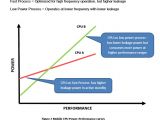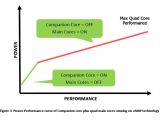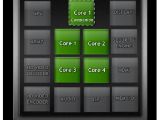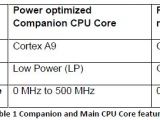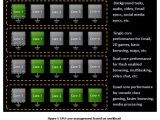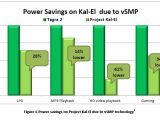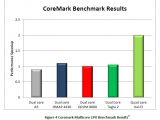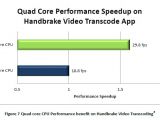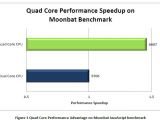After a long wait, Nvidia is finally getting ready for the launch of Kal-El and it recently sent our way a series of documents describing in great detail the architecture of this chips as well as the performance improvements brought by the move to a quad-core design.
Nvidia introduced Kal-El at MWC 2011 in February of this year and back then it described the SoC as a quad-core ARM Cortex A9-based chip which brings great performance benefits when compared with the current Tegra 2.
While the last part of the statement still hold true, what Nvidia failed to mention is the Kal-El will actually feature a fifth Cortex A9 core.
The Santa Clara company calls this technology variable Symmetric Multiprocessing, vSMP for short, and its main purpose is to reduce the power consumption of Kal-El when running in an idle state or when executing tasks that require low processing power.
Compared to the other four ARM cores found inside Kal-El, the so called “Companion” core is manufactured using a special low-power silicon process.
Before moving on, a short discussion about CPU fabrication techniques is in order to better understand Nvidia's reasoning for this decision.
Processor power consumption is mainly characterized by two characteristics: leakage power and dynamic power.
Leakage power is for the most part determined by the silicon process technology used, while dynamic power is determined by the silicon process technology and by the operating voltages and frequencies of the chip. The total power consumption of the chip is the sum of these two values.
As a result, when a processor is operated at or near its peak frequency, its dynamic power consumption accounts for most of its TDP and while in idle or near idle, the leakage power is a significant portion of the total power consumption.
As stated above, the fabrication technology employed for a chip affects its leakage power to a great extent and transistors built using fast process technologies consume high leakage power under standby, but are capable at running at higher frequencies without requiring a significant increase in operating voltages.
On the other hand, chips manufactured using lower power technologies have low leakage power but require more volts when operating at higher frequencies.
The so called Companion core is built on the second process, while the four other cores use the faster process technology.
Nvidia's Kal-El processor can switch automatically between the Companion and the rest of the cores, transparently of the operating system, thanks to a series of hardware-based and low-level software-based management.
According to Nvidia, the Level 2 cache of the Kal-El SoC is common to all the cores so there are no penalties involved in synchronizing caches between cores running at different frequencies.
The switching time between the cores is also optimized by a series of advanced circuits and logic, so this process happens in about 2 miliseconds, inclding the time needed to stabilize the voltage rails.
According to Nvidia's documentation, the vSMP technology enabled it to decrease the power consumption of Kal-El by as much as 61% when compared with Tegra 2, in some operating scenarios.
Together with the details about Kal-El architecture, Nvidia has also released a series of benchmarks meant to showcase the performance advantage brought by the move to a quad-core design.
The benchmarks made available also show use the graphics performance brought by Kal-El in games, where it manages to deliver at least twice the speed of Tegra 2.
All these performance increases, and especially the new vSMP technology, make us really excited about Kal-El, as is shaping up to be one of the biggest surprise of 2011.
Now, the only thing that remains to be seen is if Nvidia's partners are actually able to deliver the first tablets based on this SoC by the end of this year.
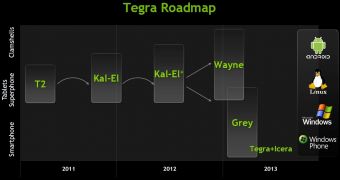
 14 DAY TRIAL //
14 DAY TRIAL // 
